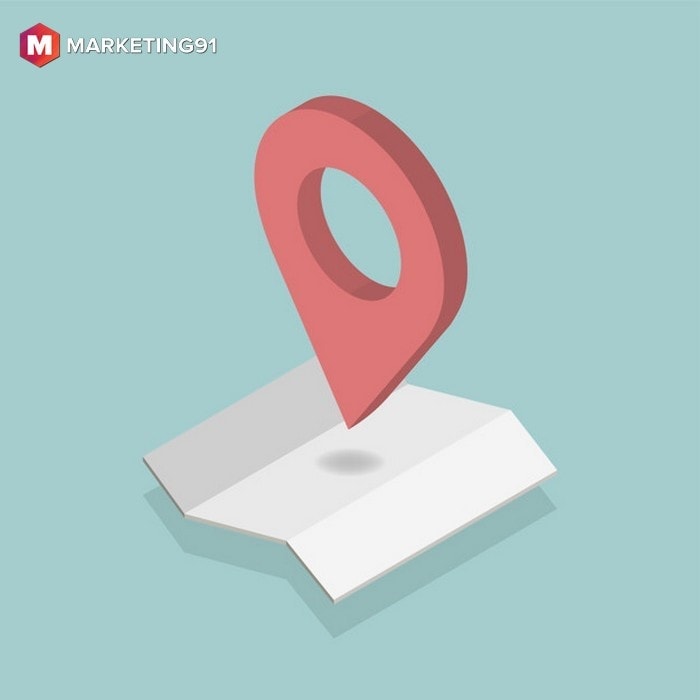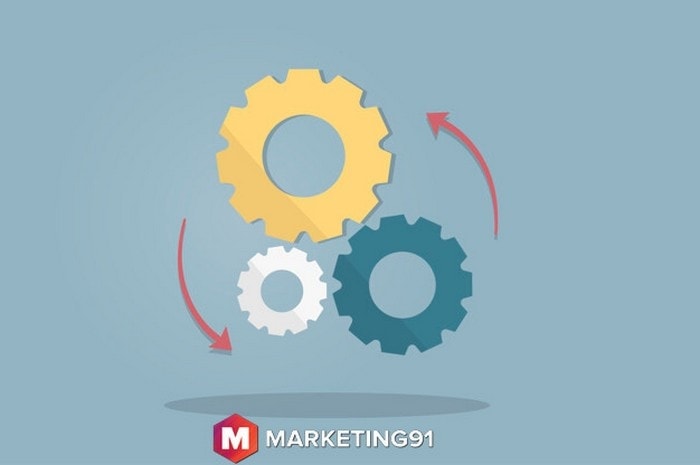Retail marketing mix refers to the variables that a retailer can use in variable methods to arrive at an effective marketing strategy to attract his prospects.
The variables are the varieties of merchandise and assortment along with the services that are offered, including advertising pricing layout and promotion and also store location design and visual merchandising.
Retailers of an employ a variety of combinations to promote their business and to ensure proper reach to their prospective customers. The use of multiple methods depending on their objectives to promote themselves and create a market profile.
The choice of methods of promotion varies and is dependent on the nature of the business, the goods that are kept in the retail store, and other such multiple factors.
Could your retail strategy evolve with these insights?
Retail marketing has continuously evolved with industry trends, emphasizing the need for data-driven strategies. According to a report from Statista in 2023, the global retail eCommerce sales reached approximately $5.2 trillion, a testament to the burgeoning online retail space. This growth suggests a significant shift in consumer shopping behaviors, with 50% of sales now influenced by digital channels. Consequently, it’s crucial for retailers to integrate effective digital marketing strategies within their traditional marketing mix to truly capture the modern consumer.
For those looking to enhance their retail strategies, consider leveraging customer data analytics to better understand buying patterns and preferences. Tools like Salesforce Commerce Cloud or Shopify’s analytics module can provide actionable insights into customer behaviors, helping retailers refine their product, price, promotion, and place strategies. Embracing these technologies can lead to more personalized shopping experiences, ultimately driving customer loyalty and increasing conversion rates.
The credibility, control, and flexibility along with the cost that is associated with the retail promotion methods determine the choice of method of promotion.
There are 7 Ps of the retail mix, which is as follows:
Table of Contents
1) Product

Product is the basic element of any and every organization. Some people go to the extent to comment that an organization is nothing but a collection of products. The product line is defined as the varieties of the products that are produced by a company, or that is stocked by a retailer.
Collection of all the products and offering the company is known as product mix. The same products that are produced by the company are the ones that are sold by the retailer and kept in the retail store. Product mix refers to the length breadth and depth of the products.
Result of the product is the total number of products that are present in the product line while the breadth of the product refers to the number of product lines that are offered by the company and finally the depth of the product means the various varieties of a particular product in that particular product line.
The retail product mix is also called as a product assortment. Making sure that the availability of the product and inventory levels are according to the demands of the customer is very crucial for a retail store manager. Maintaining adequate inventory levels of product to meet the demands of the customer is very important.
Multiple strategies can be used in case of retail product mix such as
- New product launches
- Modification of existing product lines
- Trading town or trading up
- Assortment reduction or line elimination
- Management of PLC
Multiple combinations are used by retailers to achieve their business and promotional objectives.
2) Price
One of the most important element or variables, and the retailing buying decision is price. The entire retail organization is dependent on the single factor; it was either make it or break it. It is also known as the biggest and easiest measurement, which is subject to change.
Rising helps the retail organization to complete its objective. This is also significant for new market entrant whose primary function is to establish their brand and then enjoy the increasing profits as and when the brand gets acceptance from the customers. From the customer’s point of your price is considered as one of the main reason to visit a particular retail store.
The pricing strategy in the case of the retail marketing mix should be consistent and consider the overall positioning of retailers sales, profits, and rate of return on investment.
The lowest price may not necessarily mean the best price. Profit is the difference between cost and price. This can be very high when an urgent situation is exploited by the salesman.
Cash flow, overall growth, and profitability are sort out by the retailers in order to survive the retail business. But in this case, pricing cannot be determined in isolation, and operating expenses and costs are equally important while establishing the retail price. Pricing the products is either based on the market at the cost of the product.
The profits that are generated are within this and is controlled by the government and oriented by consumer or competition. Before one can determine the price, it needs a certain consideration such as the position of the market the position of the product in the market the perception of the customer various stages of a product life cycle through which the product is passing along with the competitive strategy and the overall retail marketing mix.
The calculation of retail price should always be based on the markup and not the cost that is involved.
Following are the components of price mix
Competition, organizational objectives, credit terms, discount, cost and profit, variable and fixed cost, pricing options, positioning strategies, pricing policies, etc.
3) Place
The availability of the product should be close to the place of consumption so that the prospects and the customers can buy it easily. Ab preferred brand by the customer who is not easily available at a location which is convenient to the customer that person made by some other brand in the same category thereby increasing the market share of the competition.
This is my the retailer has to and sure the availability of the product so that the customers can buy it whenever they require — the major components of place, in the retail marketing mix: physical distribution and marketing channels.
The elements of the marketing mix are affected by the channels decisions and involve a long term commitment of resources for them to run smoothly.
The intermediaries which are involved in the channel network independent organizations and their needs should be taken into consideration evaluating the alternatives of the channel. The marketing efforts success is dependent on a full-proof distribution network.
The stronger than another network, the better the success of the marketing effort. The elements of physical distribution involve warehousing, transportation, bulk packaging, material handling, etc.
Some of these activities may be carried out by the intermediaries, and he is coordination would be required to see in maximum results of marketing operations. The Place also concerns with levels of operation of the store and the number of employees that are needed.
4) Promotion
Once the budget of the retail store has been decided, the retailer should select an appropriate combination of public relations advertising, sales promotion, and personal selling. While this may be true in case of retailers, in case of small traders there are points which are limited because of limited availability of the funds, and they have to use advertising methods of promotional methods like direct mail holdings store displays fliers and other related publicity methods to attract the customers.
Retailers who have no problems with financing may opt for Print or television media in order to promote their Store. The promotional mix is the one which varies from retailer to retailer and country to country and also depends on technological advancement. It also depends on the nature of competition and the finances available with the retailer.
The promotional mix is designed by the retailer, which is in compliance with the objectives of the store, such as attracting the customers positioning of the organization and increasing the turnover.
It also is based on other objectives such as clearing of the seasonal merchandising with special offers and announcement of special events.
Retailers are known to spend the promotional budget on the development of advertising and advertising campaigns along with other promotional activities. The retailer is also known to have various methods of promotion in order to promote his goods.
The methodology of promotion that is used by the retailer should be compatible with the stored image and the budget that is allocated for promotion by the retailer.
The primary objective behind the promotional strategy is to influence the decision of purchasing. Hence the retailer has to ensure that proper budgets and time is allocated in order to make the promotional activity more effective.
5) Process
The process is perhaps one of the most crucial P in the retail marketing mix. The retail industry is based entirely on processes such as order processing and management of the database.
Right from the moment a customer enters the retail store, he is dependent on the process which will help him to find the appropriate section which has the appropriate goods.
It is a process that will help him find the price of the product along with other products and their prices, which help them to make a buying decision. Then the customer approaches the billing counter, which has an order processing system and a database management software which processes the order and generates a bill to the customer and processes the payment.
Other processes such as queuing system and standardization also part of the process. It is essential that all these processes are interlinked for a customer to have a smooth experience.
6) People
People is perhaps another most important aspect and the element of retail marketing. People in the retail store are the ones that help the customers to find their product to help them with a particular product. Is also includes the capacity of the staff and the efficiency and availability.
The staff should be capable and efficient to carry out the functions of the store smoothly. The interaction of the staff with customers should be a profession as well behaved and helpful.
If if a particular product needs internal marketing it is the people who make sure that the internal marketing is done in accordance to the marketing rules and also ensures that the message reaches the right people or right customers.
7) Physical Evidence
The layout of the shop and the reception and check out are part of physical evidence. Answering questions such as what will be the location of the store, or the location of the store in the mall, etc. cockroaches in case of physical evidence.
Interaction of customer and the staff is also included in physical evidence along with people. The testimonials of the customer the cash receipts and after-sale service are also part of physical evidence of retail Marketing Mix.
Liked this post? Check out the complete series on Retailing




